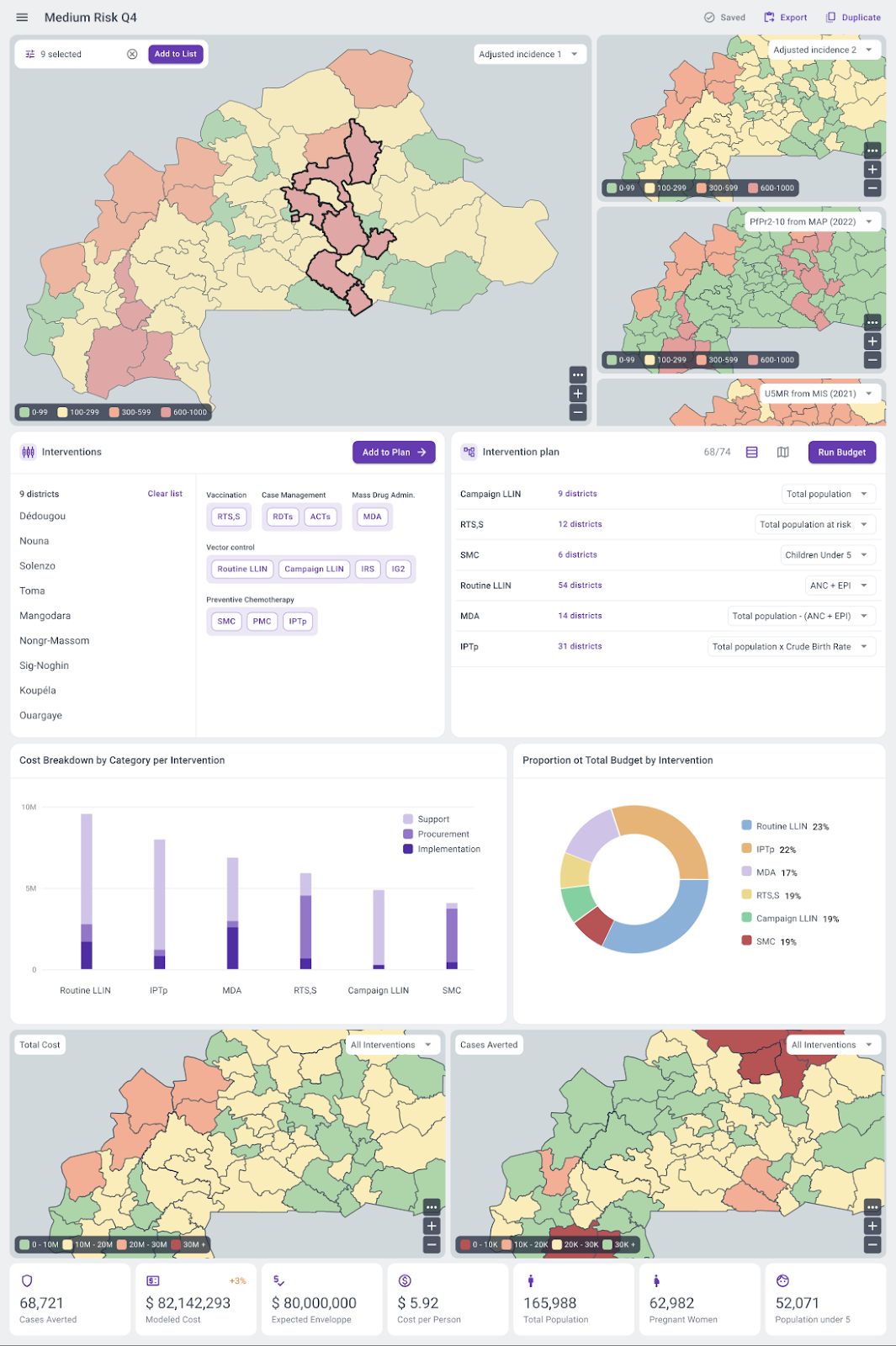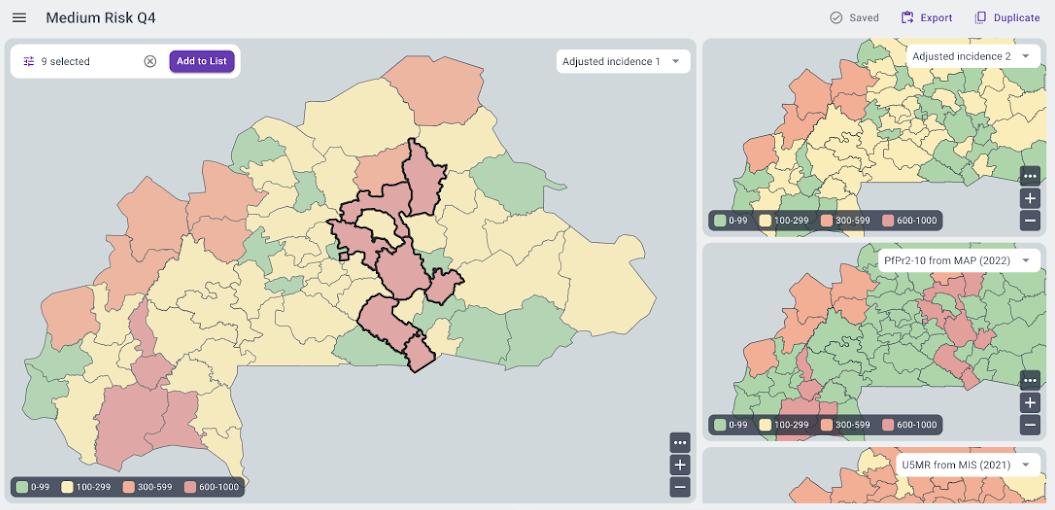Why build the SNT digital toolbox?
In malaria-affected countries, National Malaria Programmes face the challenge of making high-stakes decisions with limited data and resources. Subnational Tailoring (SNT), as presented in the WHO guidance, provides structured support to countries to use local data and contextual information to determine the most appropriate packages of interventions and strategies, and to allocate resources for maximum impact on transmission and disease burden. It represents an inclusive, evidence-informed process through which national malaria programmes and partners apply WHO recommendations in locally relevant contexts, enabling the development of country-owned, strategic, and operational cost plans. Yet, in practice, the process often remains fragmented, consultant-dependent, and difficult to reproduce, which limits its potential to ensure coherence, sustainability, and national ownership.
With support from the Gates Foundation, Bluesquare, PATH, and the Institute for Disease Modeling (IDM) are co-developing the SNT Digital Toolbox, a unified digital platform designed to operationalize SNT principles. The Toolbox helps NMPs analyze subnational data through approaches such as stratification, modeling, and cost-effectiveness analysis, to address locally defined priority questions and guide planning and implementation.
By connecting directly to national data systems, the Toolbox enables malaria programme teams to take evidence-informed decisions on the optimal mix of interventions. The resulting cost and data-driven strategies strengthen the case for financing with global stakeholders. Ultimately, by transforming fragmented datasets into actionable intelligence, the Toolbox supports NMPs in enhancing the impact, equity, and efficiency of malaria control and elimination efforts across subnational contexts; and in adapting strategies over time for sustained success.
From Fragmented Data to an Integrated Toolbox
Before OpenHEXA, malaria data management was often fragmented. National malaria data repositories played the central role of bringing together epidemiological, climate, and intervention data from multiple sources. However, analyses were typically run on individual computers, relying on ad-hoc scripts and lengthy manual cleaning. OpenHEXA acts as a platform that transforms this fragmented and opaque workflow into a collaborative, transparent, and reproducible data processing environment — one where datasets are continuously updated, analyses can be replicated at any time, and the overall process is auditable and constantly improved.
OpenHEXA provides a secure, collaborative environment where SNT analysts can:
- Connect and integrate data from national systems (DHIS2, NMDRs) and global datasets (MAP, ERA5, DHS, WorldPop).
- Detect and correct data issues by applying automated outlier detection and imputation workflows. These pipelines flag inconsistent values using statistical rules (IQR, SD, MAD) and repair gaps through rolling averages or reference layers from MAP, ensuring cleaner, more reliable inputs for analysis. To further enhance data quality management there’s a feedback loop between OpenHEXA and the NMDR.
- Standardize analytical workflows through reproducible pipelines that generate key indicators such as incidence, prevalence, mortality, and seasonality, enabling consistent measurement across countries and over time.
- Enrich analyses with additional covariates — including vector behavior, insecticide resistance, health care access, and intervention coverage — providing the contextual depth needed to interpret malaria risk accurately.
- Document and share every step of the process, ensuring full transparency and reproducibility across teams and partners.
By embedding these pipelines inside the SNT Digital Toolbox, OpenHEXA turns complex, technical data integration into a repeatable, country-led process.
Powering the SNT Scenario Explorer
The OpenHEXA workflows feed directly into a web application — the SNT Scenario Explorer — where malaria program teams can visualize geospatial datasets, allocate interventions, estimate budgets and impact, and compare scenarios in real time.

From a single dashboard, decision-makers can:
- Select spatial units such as districts based on malaria risk and population data.
- Visualize the epidemiological impact of intervention mixes (via IDM, PATH and SwissTPH models).
- Estimate costs instantly using the PATH budgeting methodology.
This end-to-end chain — from data extraction to decision support — runs on top of OpenHEXA’s standardized analytical backbone, ensuring that all outputs remain consistent, traceable, and aligned with national malaria data repositories (NMDRs).
At its core, OpenHEXA ensures that this independence is both technical and institutional. Every pipeline, dataset, and analysis is reproducible, open, and fully controlled by the country’s own data infrastructure — advancing data sovereignty while enabling collaboration among global malaria partners.








